|
|
|
Sort Order |
|
|
|
Items / Page
|
|
|
|
|
|
|
| Srl | Item |
| 1 |
ID:
167025


|
|
|
|
|
| Summary/Abstract |
Increased energy efficiency (EE) in manufacturing firms is important for confronting climate challenges. However, the information barrier is considered a major restriction on EE innovation. Building on the theory of absorptive capacity and the current EE literature, we argue that this barrier relates to firms' ability to assimilate and exploit information. Thus, this study's objective is to analyse firms' knowledge characteristics as determinants of EE innovation. We perform logit regressions using a Norwegian panel dataset for the period 2010–2014. The results are based on statistical correlations between data points that have potential uncertainties. Still, the main implications from our study are that prior knowledge, in terms of higher educated workforce, knowledge development, in terms of R&D capacity, and external knowledge cooperation, such as cooperation with universities and competitors, increase firms' pursuit of EE innovation. Further, the results also imply that there is an interaction effect between higher educated workforce and collaboration with universities. These results suggest that policy makers should consider firms' ability to assimilate and exploit information. This can be done by providing information according to firms' needs and absorptive capacity, and offering possibilities for firms to increase this capacity.
|
|
|
|
|
|
|
|
|
|
|
|
|
|
|
|
| 2 |
ID:
181229


|
|
|
|
|
| Summary/Abstract |
This article investigates the context and development of the Israel Defence Industries (IDI) during the period 1930–2018. During this timeframe, the IDI was forced to transform several times with the Israel Ministry of Defence acting as the main facilitator. Well established links among government institutions, academia, investors and the IDI contribute to armament quality and innovations which supports market expansion. Nevertheless, US support remains an important enabler in facilitating the IDI developments. Nowadays, the IDI is an important player in Israeli economics that contributes to the exports and facilitates developments in other sectors.
|
|
|
|
|
|
|
|
|
|
|
|
|
|
|
|
| 3 |
ID:
156901


|
|
|
|
|
| Summary/Abstract |
Anticipating whether an adversary group will continue to use their usual (“conventional”), expected attack methods is important for military and counterterrorism practitioners tasked with protecting the security of others. Conventional attack methods are by their nature easier to plan and prepare for whilst “innovative” methods may take those responsible for security and counterterrorism by surprise and, as such, may have more impact and more serious consequences. The present study aimed to develop understanding of how, when, and why adversary groups might decide to use conventional attack methods or opt to do something innovative instead. A literature review was conducted and findings were applied to develop a thorough understanding of the decision-making process that underlies an adversary group's choice of attack method. Identified are three stages preceding the execution of an attack: a) “strategic direction”; b) “incubation”; and c) “planning and preparation,” plus “overarching” and “contextual” factors that can influence the process at each stage. It is suggested that it is these factors and how they influence decision-making that result in innovative methods being used to execute an attack, or convention prevailing. Findings can aid practitioners and policy-makers in counterterrorism, security, and law enforcement, to support their understanding, evaluation, and countering of current and future threats.
|
|
|
|
|
|
|
|
|
|
|
|
|
|
|
|
| 4 |
ID:
182549


|
|
|
|
|
| Summary/Abstract |
Cost escalation for many complex defence equipment is arguably not sustainable. Customer driven requirements have led to an exponential increase in costs by pushing frontiers of technology to support primarily incremental improvements of traditional equipment concepts. Accordingly, affordability has become a more discussed subject in defence acquisition. This paper addresses the process of generating complex defence equipment concepts. The purpose is to explore how affordability is managed in that process and to identify possible leads to how an unsustainable cost escalation for this type of equipment can be curbed. This is done by studying two cases of concept generation of future combat air equipment systems from a company process perspective. This applied micro perspective on cost escalation showed that none of the concepts generated in these two cases were assessed to curb the cost escalation. Further, the innovation model for the generated concepts, with only one notable exception, was incremental. Nevertheless, the empirical observations from these two cases offer leads on how to potentially foster a more innovative and affordability-oriented concept generation process for future defence equipment, as well as indicating avenues for future research.
|
|
|
|
|
|
|
|
|
|
|
|
|
|
|
|
| 5 |
ID:
105128
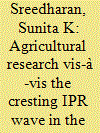

|
|
|
|
|
| Publication |
2011.
|
| Summary/Abstract |
Innovative resource use or 'jugaad' by ordinary Indian has contributed immensely to adapting to hardships on the one hand and adding to the global knowledge bank on the other hand. In the present era, India possesses one of the more elegant IPR systems in the world, although the newly enacted laws have encountered minor hiccups. In fact, it was an Indian agricultural product (Basmati rice) that caused a furore over three continents on three different aspects of intellectual property laws in the last decade of the 20th century. However, the 21st century seeks answers to problems beyond the major milestones in Indian agriculture (the green and white revolutions) to tackle the problems of food security and volatile food prices. The gap in the perception of researchers and legal acumen needs to be bridged; wherein IP audit is an important tool to assess and project the intellectual properties of clients. This paper attempts to synthesize a well-knit idea for IPR awareness in agriculture sector using sectoral as well as external examples.
|
|
|
|
|
|
|
|
|
|
|
|
|
|
|
|
| 6 |
ID:
171016
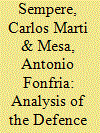

|
|
|
|
|
| Summary/Abstract |
This article analyses the defence industrial market using an agent-based model. The model draws a simplified version of the sector regarding the market agents and their conduct based on empirical data and commonly observed micro-regularities. Its computer implementation is initially tested on a simple scenario to verify its realism. Afterwards, some specific scenarios, caused by government industrial policies, are assessed. The main finding is the capability of the model to reproduce the behaviour of market agents and to replicate the evolution of the macroeconomic indicators and patterns normally seen under different, but common conditions and policies (e.g. free market, discriminatory procurement, licensed production or multilateral development and production). This suggests a powerful tool for gaining further insight and exploring government policies in this important economic sector.
|
|
|
|
|
|
|
|
|
|
|
|
|
|
|
|
| 7 |
ID:
175929
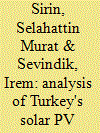

|
|
|
|
|
| Summary/Abstract |
As global investments continue in renewable energy technologies, investment costs have declined significantly. Meanwhile, many governments have shifted from pre-set renewable support schemes to auction schemes in order to introduce competition in price setting. Turkey has initiated Renewable Energy Resource Zone (RERZ) auctions to promote solar photovoltaic (PV) and wind technologies. We examine the first of these auctions, Solar PV RERZ, which has ambitious targets in terms of increasing solar PV capacity and enhancing domestic competence in solar technologies. Despite the auction being hailed as a success in terms of low prices, we utilize the Levelized Cost of Electricity generation (LCOE) analysis to demonstrate that the project is vulnerable to macroeconomic shocks and financial risks. Model results show that the capacity factor is the most prominent factor in costs, and 10% change in the capacity factor affects the LCOE about the same rate. Investment cost and interest rate are the other major factors affecting the LCOE. Based on these results, we make recommendations by discussing how Turkey can improve its auction design by incorporating some of the elements used by Brazil and South Africa.
|
|
|
|
|
|
|
|
|
|
|
|
|
|
|
|
| 8 |
ID:
116806
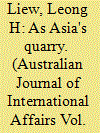

|
|
|
|
|
| Publication |
2012.
|
| Summary/Abstract |
The re-emergence of China in the new millennium has increased global demand for mineral resources, causing a return to the Australian vision of national prosperity tied to primary exports-this time minerals. Many analysts have questioned the wisdom of anchoring Australia's prosperity to being a quarry for Asia. The current mining boom has enabled Australia to postpone, but has not removed, the need to develop new industries to sustain a high standard of living in a future marked by global warming. Innovation is essential to the development of new industries that can contribute to a strong and sustainable economy, but cultivating innovation requires serious national commitment over the long term. This requires Australia to seriously reconsider education policy at all levels and to abandon what the author terms 'rational choice populism'-a culture of anti-intellectualism and an unequivocal belief in a form of market fundamentalism-that discourages the advanced level of investment in human capital required for innovation.
|
|
|
|
|
|
|
|
|
|
|
|
|
|
|
|
| 9 |
ID:
174990
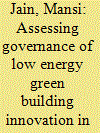

|
|
|
|
|
| Summary/Abstract |
This paper explores the governance of sectoral innovation and niche formation of green buildings and other low energy buildings (like NZEBs). Two analytical frameworks are used and synthesized: the Sectoral Systems Innovation Assessment framework (SSIAf) and the Governance Assessment Tool (GAT). The key components of the former are: shaping of expectations, actor network formation, institutions, learning process, and stimulating market demand. The SSIAf components are then assessed against the four quality criterions of the GAT framework, i.e. extent, coherence, flexibility, and intensity. The research design presented in this paper applies the analytical framework developed to case studies of two cities: Singapore and Delhi. Data collection involved participant observation and expert interviews. The results of the study reveal that the overall governance conditions in Singapore are fairly strong and highly supported by the government, unlike Delhi where governance quality was found to lack coherence and intensity, and can be considered only moderately supportive to green building innovations. The results also reveal the role of government actors in steering the energy transformation process in building sector. The analytical framework developed in this paper can be further elaborated, also as a potential policy tool to support cities in managing energy system innovations like energy infrastructures, smart grids or community energy storage in diverse and complex urban settings.
|
|
|
|
|
|
|
|
|
|
|
|
|
|
|
|
| 10 |
ID:
073711
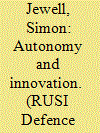

|
|
|
| 11 |
ID:
186419
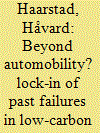

|
|
|
|
|
| Summary/Abstract |
Automobility, including the infrastructures, technologies and institutions that created high dependence on private car use, has led to significant environmental and climate problems and notably high carbon emissions. Now cities are attempting to move beyond this failed regime by experimenting with a range of different mobility innovations. In this paper, we examine whether emergent policy-led experiments and innovation processes in low-carbon mobility are learning from the past, or whether they are reproducing key elements of past policy failures. Through four case studies – Birmingham, Stavanger, Milton Keynes and Melbourne – we assess attempts to break out of high-carbon automobility through three key factors, namely diversification of travel options, a shift from individual to shared forms of mobility, and whether these aspects are implemented at scale. We find that while all cities show potential for diversification and sharing at scale, current modes of innovation exhibit features that may reproduce rather than reduce high-carbon automobility. Our analysis attributes this risk of continued failure to how policy-led experimentation and innovation are structured and themselves become locked in, thereby upholding the obdurate automobility regime.
|
|
|
|
|
|
|
|
|
|
|
|
|
|
|
|
| 12 |
ID:
192610


|
|
|
|
|
| Summary/Abstract |
Innovation spreads not only through new technologies but also through new processes and concepts populating international and security studies. Consequently, the popularity of these concepts, extensively diffused across defence documents worldwide, does not emerge alone. Difficulties in estimating how much of them became tacit knowledge and how successfully these new processes and concepts were adopted come as a plus. That scene depicts the diffusion of “interoperability,” quickly aggregated to the defence vocabulary but arguably translated into practice, particularly from an organisational standpoint. Provided that significant challenges lie ahead of regions where the debate still requires a more solid groundwork, this study addressed Brazil’s interoperability state of the art. We performed a qualitative analysis based on the very same referential used in the country’s latest CONOPS in this regard – Tolk’s Measures of Merit in Coalition Operations Model. By doing so, we aimed to establish a dialogue with the current perspective of the country whilst showing that neglecting the organisational aspects of interoperability poses practical consequences, undermining a complete translation of this central capability into practice. We argue that interoperability adoption stands for far more than its reproduction across the defence metier, comprising organisational change underpinned by reforms in civil-military relations..
|
|
|
|
|
|
|
|
|
|
|
|
|
|
|
|
| 13 |
ID:
192831


|
|
|
|
|
| Summary/Abstract |
International Oil Companies (IOCs) represent a significant source of capital and expertise that could be deployed to contribute to the investment required to achieve the energy transition to a low carbon future. This paper sheds light on the current motivations for mergers and acquisitions (M&A) by the various energy sectors and focusses on policies and commercial contexts that would favour IOCs incorporating renewables into their core business. An empirical analysis of a twenty-year history of M&A in the energy sector, covering over 10,000 transactions, is complemented by an economic model that differentiates between investment for innovation and investment for scale and transaction benefit. The analysis confirms that in the case of renewables, IOCs are currently at the exploratory stage of business development and appear to be valuing innovation based on renewables on subset of their business. The analysis concludes that IOCs favour core investment in functioning competitive energy markets rather than in rate-of-return regulated assets, and that for IOCs in particular policies and market rules directed towards that end would favour both near- and long-term investment by them into low carbon energy.
|
|
|
|
|
|
|
|
|
|
|
|
|
|
|
|
| 14 |
ID:
164718


|
|
|
|
|
| Summary/Abstract |
China's advance to the forefront of scientific research is one of the 21st century's most surprising developments, with implications for a world where knowledge is arguably “the one ring that rules them all.” This paper provides new estimates of China's contribution to global science that far exceed estimates based on the proportion of papers with Chinese addresses in databases of international journals. Address‐based measures ignore articles written by Chinese researchers with non‐Chinese addresses and articles in Chinese language journals not indexed in those databases. Taking account of these contributions, we attribute 36 percent of 2016 global scientific articles to China. Taking account of increased citations to Chinese‐addressed articles relative to the global average as well, we attribute 37 percent of global citations to scientific articles published in 2013 to China. With shares of articles and citations more than twice its share of global population or GDP, China has achieved a comparative advantage in knowledge that has implications for the division of labor and trade among countries and for the direction of research and of technological and economic development worldwide.
|
|
|
|
|
|
|
|
|
|
|
|
|
|
|
|
| 15 |
ID:
101388
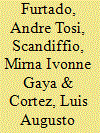

|
|
|
|
|
| Publication |
2011.
|
| Summary/Abstract |
Ethanol has recently been of great interest worldwide because it is a viable economic alternative to petroleum products and it is a renewable source of energy that mitigates the emission of greenhouse gases. Brazilian bioethanol from sugarcane is the most successful case at the world level because of its low cost and low level of greenhouse gas emissions. Brazil's success with sugarcane cannot be understood as based solely on a natural comparative advantage, but as a result of efforts that culminated in a positive trajectory of technological learning, relying mostly on incremental innovations. The purpose of this article is to analyze the key aspects of the innovation system built around the Brazilian sugarcane industry. It is based on the national innovation systems approach according to which innovation results from the interaction of different institutional actors. Institutional arrangements are analyzed as the basis for the innovative process, in particular R&D and the innovation policies and strategies of the main players in the sugarcane sector, including sugar and ethanol mills, industrial goods suppliers, public and private research institutions, and governmental agencies.
|
|
|
|
|
|
|
|
|
|
|
|
|
|
|
|
| 16 |
ID:
109157
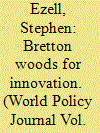

|
|
|
| 17 |
ID:
149712
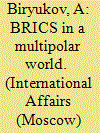

|
|
|
|
|
| Summary/Abstract |
Since 2009, the countries brought together by this acronym have held seven summits that have become the group's main institutional mechanism. BRICS is chaired on a rotating basis, with each member country presiding in the group for one year. In 2016, India has replaced Russia as BRICS chair.
|
|
|
|
|
|
|
|
|
|
|
|
|
|
|
|
| 18 |
ID:
187868


|
|
|
|
|
| Summary/Abstract |
Based on microdata from China's listed companies and macrodata for broadband internet access in prefecture-level cities, this paper explores the relationship between broadband internet and enterprise innovation. Using the change in market concentration caused by the North–South separation reform of China Telecom in 2002 as an instrumental variable, the results show that in general, a 1% increase in broadband internet access results in a 1.395% increase in the number of corporate patents. Specifically, the number of valid patents, patent citations and valid patent citations, reflecting patent quality, increases by 1.499%, 0.920% and 0.763%, respectively. The mechanistic analysis shows that broadband internet access contributes to increasing the number of R&D personnel and personal innovation efficiency, enhancing enterprises' willingness to innovate, and easing financing constraints. Further analysis suggests that broadband internet access mainly promotes invention patents rather than design patents. The innovation effect is more evident among high-tech, inventor-intensive, state-owned enterprises and enterprises located in the non-southeastern coastal region of China.
|
|
|
|
|
|
|
|
|
|
|
|
|
|
|
|
| 19 |
ID:
073710
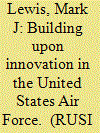

|
|
|
| 20 |
ID:
138288


|
|
|
|
|
| Summary/Abstract |
North Atlantic Treaty Organization (NATO) members such as Canada and Denmark have transformed their military forces to better engage in expeditionary warfare. They are incorporating advanced technologies to find and strike targets precisely from great distances at little risk to themselves. The persistence of unmanned aerial vehicles (UAVs) represents the next step in modern airpower’s long-range reconnaissance/precision strike complex and has transformed ground operations. Nonetheless, operational requirements in Afghanistan caught Canada and Denmark flat-footed. Ultimately, Canada effectively used UAVs while Denmark could not. Moreover, neither state has a UAV capability beyond small tactical systems (although each has plans to develop or join in the development of larger ones). The Canadian and Danish experiences suggest that ground forces are most likely to acquire and integrate small UAVs into their force structures and concepts of operation and that the air forces of small- and medium-sized Western countries will likely do so only in cooperation with others. It is here that the Canadian and Danish UAV paths may yet again cross.
|
|
|
|
|
|
|
|
|
|
|
|
|
|
|
|
|
|
|
|
|